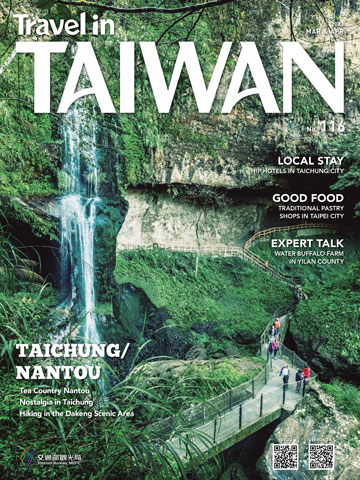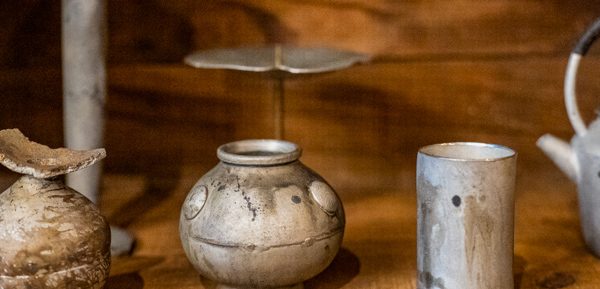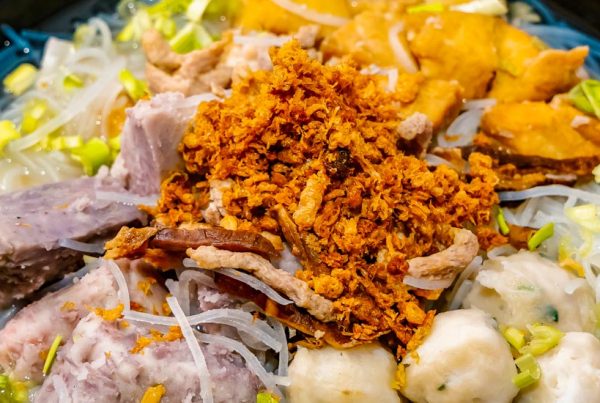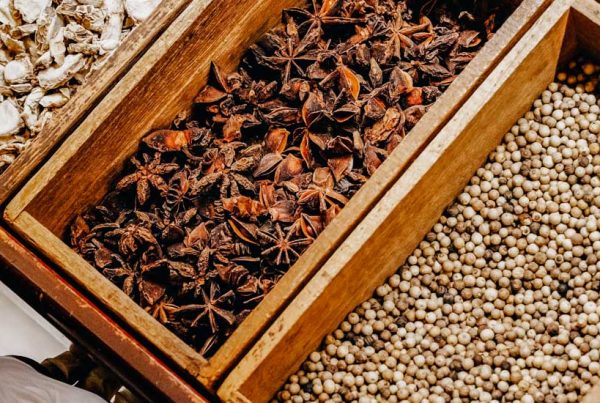Hot-Spring Bathing on Taiwan’s North Coast
TEXT / AMI BARNES
PHOTOS / RAY CHANG
Taiwan’s north coast is a perennial favorite with Taipei urbanites seeking an escape from the daily grind. Easily accessed from the city, summer weekends see families flocking to the area’s sandy beaches. But when the mercury dips, a different kind of watery relaxation is called for – the warm embrace of a hot spring.
The existence of hot-spring bathing on Taiwan’s north coast can be attributed to an earthquake. On November 23, 1867, a massive trembler shook the coastal settlements, triggering a tsunami and inundating the shorefront with 8m-high waves. All but a dozen or so of the 700 houses built close to the sea were destroyed. Perhaps the only sliver of positivity to come out of this geological upheaval was that when the aftershocks had at last receded, the locals of the Jinbaoli (modern-day Jinshan) area were left with newly-formed pools of seemingly limitless thermal waters.
The hot springs around today’s Jinshan and adjacent Wanli districts are noteworthy in that they comprise four different types of mineral-rich waters: milky-looking sulfur springs (this is what gives the hot springs of Taipei’s Beitou District their distinctive aroma); salty underwater springs that have been filtered through the bedrock; odorless carbonic acid springs; and opaque, golden-orange iron springs. As the seasonal cool air draws in, it’s time to start stripping off and lowering yourself carefully into a steaming pool.
Content
Jinshan
Governor-General Hot Spring
Standing close to the ocean, just where the Jinbaoli Stream flows into the Yuantan River, the Governor-General Hot Spring is a hot-spring resort with historical pedigree. Opened in 1938, it takes its name from the fact that for a few short years it was a guesthouse for the Japanese governor-general of Taiwan. The building abuts the usefully defensive Shitoushan promontory, so when Japan ceded Taiwan at the end of World War II the ROC military seized it, stopped up the pipes, and used it as a base until later abandoning it. For decades, the resort lay derelict and unremembered save for a cameo appearance in the 1980s Taiwan TV drama You Can’t Tell Him. When the current owners inherited the building in 2000, it was little more than a shell. But rather than bulldozing the place, they carefully salvaged what they could and painstakingly recreated what had been lost – note the replica greenish glazed tiles, the original hinoki cypress ticket counter, and the restored “Imperial Pool.” You can even find display cabinets filled with sections of the original pipes and tiles in the second-floor restaurant.


The resort is known for its saltwater baths, and offers a range of hot-spring facilities. Outside on the ground level before the main building you’ll find families enjoying the public open-air pools of various temperatures.


Inside the building are exceedingly cute private rooms, most with dual hot and cold pools that are set in self-contained gardens. At NT$1,100 per hour on weekends, these are the most expensive offerings you’ll find here, but more budget-friendly private rooms are also available for NT$770 per hour (weekday rates are slightly cheaper across the board). However, hot-spring aficionados seeking something a little more memorable should opt for the separate male and female open-air nude pools on the fourth floor. From here, men can gaze over the waves, while women can watch clouds grazing the tops of the distant mountains and follow the soaring flight of eagles wheeling through the skies.


Governor-General Hot Spring
(舊金山總督溫泉)
Tel: (02) 2408-2628
Add: No. 196, Minsheng Rd., Fengyu Borough, Jinshan District, New Taipei City
(新北市金山區豐漁里民生路196號)
Website: www.warmspring.com.tw
Wanli
CT Green Bay Hot-Spring Hotel
The CT Green Bay Hot-Spring Hotel overlooks the northernmost tip of Emerald Bay Beach – a 1.3km expanse of sand with a fishing harbor off each end. On a sunny day, the Greek-styled white-and-blue façade is like an inverse reflection of the high blue sky studded with flecks of white clouds, and standing on one of the sea-facing balconies, enjoying the salt-laced air, it would be easy to forget that you’re less than an hour’s drive from downtown Taipei.

Guests of the hotel have unlimited access to the hot-spring facilities. Located on the ground floor, there are separate areas for men and women, each with pools ranging from cool to warm, to hot, to scalding. And as with most such places separated by sex, the hotel’s pools are enjoyed in the buff, all the better to let the restorative carbonic acid waters do their work. The bathing areas are simultaneously sheltered from the general public whilst still being semi-open, meaning that you can hear sounds from the outside world and see the sky as you soak. The pools are open to children over seven years of age, so those with younger kids are better off opting for one of the rooms with an en suite hot-spring tub.

Aside from the hot-spring facilities, the hotel also offers a gym and a games room equipped with table football, billiards, air hockey, and a kids’ soft play area. But it’s hard to see why you’d want to spend all your time inside when the hotel is literally just a minute’s stroll away from a sandy beach. The waves here aren’t big, and the shallow incline of the bay makes it popular with families. After a day well spent in the hot-spring waters or the sea, guests can retire to the hotel restaurant, or take a 10-minute wander north along the seafront to Guihou Fishing Harbor, where you can feast on freshly caught seafood.

CT Green Bay Hot-Spring Hotel
(群策翡翠灣溫泉飯店)
Tel: (02) 2492-5511
Add: No. 1, Haijing Rd., Wanli District, New Taipei City
(新北市萬里區海景路一號)
Website: www.ctgreenbay.com.tw
Nearby Attractions
Jinbaoli Old Street
Occupying a skinny alluvial plain, the Jinshan area’s fertile farmland is ideal for the hardy and humble sweet potato. In fact, Jinshan has become so synonymous with the dusty tuberous roots that July and August are filled with the Jinshan Sweet Potato Festival. Along Jinbaoli Old Street, stalls offer all manner of sweet potato-based delectables. You’ll find everything from the classics (roasted, deep-fried, steeped in sweet soup alongside chewy taro morsels) to the novel (candied and swirled into soft-serve ice cream).

Shitoushan Park
Once you have eaten yourself into a sweet potato stupor, why not take a wander along the nearby trails of Shitoushan Park. The easy paths are well-paved and suitable for most abilities. From the cliff-top pavilion, you can see the Twin Candlestick Islets – a pair of sea stacks that protrude 60 meters out of the ocean. A local tale casts them as the remains of a grieving fisherman and his wife, a reminder of the many here whose lives and livelihoods depend on the sea. Visit at sunset to watch the sun sink behind far-off Yangmingshan National Park, setting close-by Huanggang Fishing Harbor ablaze as it goes.




Yehliu Geopark
Just a brief southeast drive along the coast from Jinshan, the Yehliu Geopark is located on a slender headland extending just over a kilometer into the ocean. Yehliu is a mainstay of the Taiwan travel experience, and for good reason. The internationally recognized geopark is home to numerous fascinating natural limestone sculptures, many with fitting nicknames: Fairy Slipper, Ice Cream Rock, and most famous of all, the regally weathered Queen’s Head.






Guihou Fishing Harbor
Another of the Wanli area’s top spots is the busy Guihou Fishing Harbor. Here, visitors can pick out their choice from the day’s catch and have it cooked up on the spot (or packed to take home). Foodies come to sample the three varieties of Wanli crab – three spot crab, flower crab, and stone crab – each distinguishable by the unique markings on their carapaces. The crabs are caught in specialized crab nets by experienced crab fishers year-round, but the meat is reputedly at its best between September and December.



Guihou Crab Park
Not being a seafood eater myself, I had more fun wandering around the edge of the harbor, peering at the fish darting through the waters and spotting the oversized, grinning anthropomorphized crab sculptures in the adjacent Guihou Crab Park.








